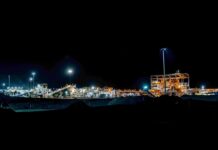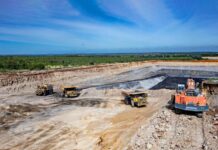Can the mining industry meet rising copper demand?

Low levels of investment in forward-looking copper projects could drive major shortages and pricing volatility in the face of unprecedented demand, according to Wood Mackenzie.
Global copper demand is expected to rise by 8.2mtpa to 42.7mtpa by 2035, a 24% surge, according to a new Horizons report from Wood Mackenzie, High-wire act: is soaring copper demand an obstacle to future growth?
Growth will be driven by traditional economic development alongside new structural demand from electrification and digitalisation. While this growth trajectory seems certain, Wood Mackenzie warns that four powerful disruptors could amplify demand and price volatility beyond expectations.
Together, this could potentially add an extra 40% of total copper demand growth by 2035.?
As a crucial component of renewable energy technologies, the broader energy transition is profoundly reshaping copper consumption patterns globally. The shift to renewable energy systems will require an additional 2mtpa of copper supply over the next decade, according to Wood Mackenzie.
The geopolitical implications of copper supply chains have become increasingly apparent as nations seek to reduce reliance on volatile energy imports.
Wood Mackenzie global copper markets research director Peter Schmitz say electric vehicles contains up to four times more copper than a conventional car.
“As battery technologies advance, copper demand intensity across charging infrastructure and power systems will remain high,” he said.
“By our forecasts, EV-related copper demand is set to double by 2035, cementing the metal’s role at the heart of the global energy transition.”
India and Southeast Asia are emerging as powerful engines of copper consumption, with their rapid industrialisation expected to add 3.3mtpa of demand by 2035, translating to average annual growth rates of 7.8% and 8.2%, respectively, according to the report.
If these economies duplicate even half of China’s historical growth path, their construction and power sectors alone could require an additional 5.4mtpa of copper and, with per-capita copper use still far below global averages, these markets represent a considerable long-term upside for demand.
Tumultuous geopolitical tensions are also among the disruptors.
“Rising defence budgets are creating a quiet but meaningful source of incremental copper demand,” Mr Schmitz said.
“While the headline numbers for military hardware appear limited, the supporting infrastructure, including hardened power networks and communications, is also copper intensive, adding scale to copper demand for defence through what appears to be normal development.
“This dynamic adds another layer of pressure to an already tight supply environment.”
Defence firms worldwide are signaling expansions across fighter programmes, missile-tracking systems and ammunition production, with infrastructure following suit, reinforcing copper’s growing role in the industrial-military complex.
Meeting this demand growth will require more than 8mtpa of new mine capacity and 3.5mtpa of additional scrap by 2035.
Wood Mackenzie estimates the industry may need to lift its baseline assumption for annual mine disruptions from 5% to 6%, effectively removing 250-300kt from the market each year and tightening supply further.
The fourth disruptor, data centres, represent the most unpredictable variable in copper demand forecasting. Artificial intelligence is set to consume an additional 2,200TWh of electricity by 2035, according to global data centre projects tracked by Wood Mackenzie’s Power team. This will lift copper demand for grid infrastructure alone to 1.1mtpa by 2030.
The report noted that as copper represents less than .5% of total projects costs, data centre developers remain largely indifferent to its price movement. A sudden surge in construction could therefore trigger price spikes of 15% or more, rapidly depleting inventories and intensifying volatility.
“Data centres create inelastic demand in the market. When developers require copper for the expansion of data centres, it is used with little concern for the copper price,” Mr Schmitz said.
“This dynamic in a nascent sector makes data centres an unpredictable and volatile source of demand in this decade.”
In a supply-constrained environment, the convergence of these four disruptors could result in prolonged periods of high prices and unpredictable market fluctuations.
Wood Mackenzie research head and director Charles Cooper says copper has become the strategic bottleneck of the global energy transition.
“From Detroit to Shenzhen, the impacts of commodity supply chain disruptions and the industry’s inability to deliver will be acutely felt,” he said.
“If government and investors fail to act, we risk turning the metal of electrification into the metal of scarcity.”






















